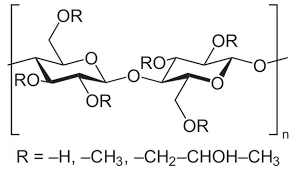
aŭg . 11, 2024 18:36 Back to list
Safety Data Information for Hydroxypropyl Methyl Cellulose Handling and Usage Guidelines
Understanding Hydroxypropyl Methylcellulose (HPMC) and Its Safety Data
Hydroxypropyl Methylcellulose (HPMC) is a versatile polymer derived from cellulose, primarily used in various industries, including pharmaceuticals, food, and construction. Its unique properties make it a valuable ingredient in numerous applications, leading to widespread usage. However, as with any chemical compound, it is essential to understand its safety data, which is crucial for ensuring proper handling and minimizing risk.
What is Hydroxypropyl Methylcellulose?
HPMC is synthesized by chemically modifying cellulose, which is a natural polymer found in plant cell walls. The modification involves the substitution of hydroxyl groups with hydroxypropyl and methyl groups, resulting in a product that is both water-soluble and hydrophilic. HPMC is available in various viscosities and degrees of substitution, making it adaptable for specific applications.
In the pharmaceutical industry, HPMC is primarily used as a binder, film-former, and controlled-release agent in tablets and capsules. In food products, it serves as a thickening agent, emulsifier, and stabilizer, enhancing the texture and shelf life of many food items. In construction, it is used in cement and plaster to enhance adhesion, workability, and water retention.
Safety and Toxicity
When handling HPMC, it is essential to refer to its Material Safety Data Sheet (MSDS) to understand its safety and toxicity profile. HPMC is generally regarded as safe, with minimal health risks when used as intended. However, the MSDS provides important information regarding potential hazards, first aid measures, and appropriate handling practices.
hydroxypropyl methyl cellulose msds

1. Health Hazards HPMC is not considered hazardous under normal usage conditions. However, exposure to excessive dust generated during the handling of HPMC in powder form may cause respiratory irritation. It is advisable to use personal protective equipment such as masks and goggles to minimize exposure.
2. First Aid Measures In case of accidental exposure, the MSDS outlines specific first aid measures. For eye contact, it recommends rinsing the eyes with water for at least 15 minutes and seeking medical attention if irritation persists. Inhalation of dust may lead to respiratory discomfort; moving the affected person to fresh air and seeking medical help is advisable if symptoms continue.
3. Fire and Stability Although HPMC is not classified as flammable, the MSDS suggests keeping it away from open flames or high temperatures. In case of fire, carbon dioxide or dry chemical extinguishers can be used. It's important to store HPMC in a cool, dry environment to maintain its stability and effectiveness.
4. Environmental Considerations HPMC is biodegradable and has a relatively low environmental impact compared to other synthetic polymers. However, proper disposal methods should be followed in accordance with local regulations to prevent any potential impact on the surroundings.
Conclusion
Hydroxypropyl Methylcellulose is a widely used substance with many beneficial applications across various fields. Understanding its safety data through the MSDS is crucial, as it provides essential information on health hazards, first aid measures, and appropriate handling practices. By adhering to these guidelines, individuals and industries can safely harness the benefits of HPMC while minimizing any associated risks. As industries continue to evolve, the importance of safety and health in the use of materials like HPMC cannot be overstated, ensuring both user safety and environmental sustainability.
-
Unlocking the Benefits of HPMC Products: A Gateway to Versatile Applications
NewsAug.07,2025
-
Unleashing the Potential of HPMC Ashland: A Comprehensive Look
NewsAug.07,2025
-
Tile Bonding Cellulose: The Key to Superior Adhesion and Durability
NewsAug.07,2025
-
Hydroxypropyl Methylcellulose Powder: The Versatile Component in Modern Pharmaceuticals
NewsAug.07,2025
-
Hydroxyethyl Cellulose: The Versatile Solution for Various Industries
NewsAug.07,2025
-
Hydroxyethyl Cellulose (HEC): The Versatile Polymer for Various Applications
NewsAug.07,2025







